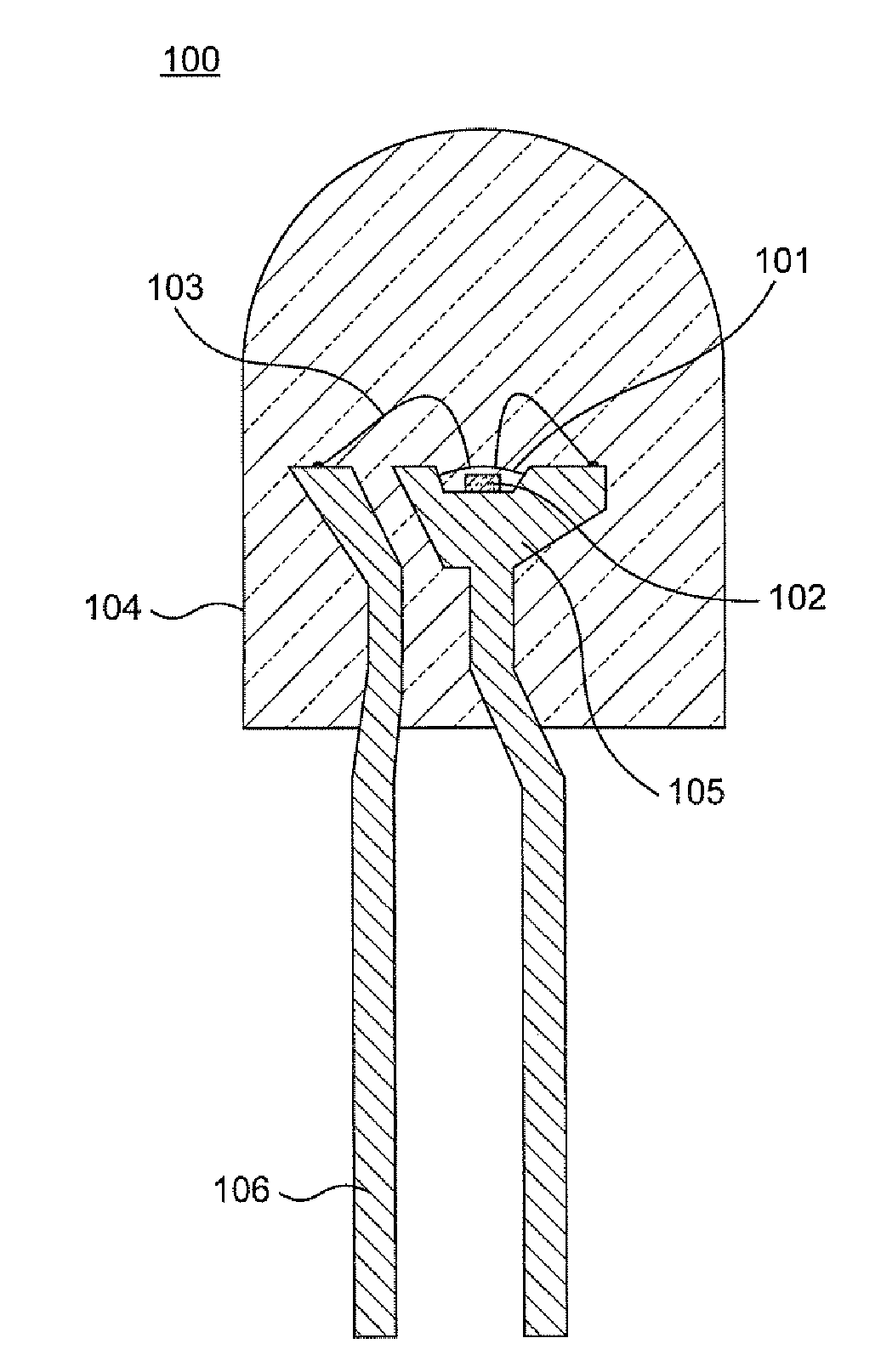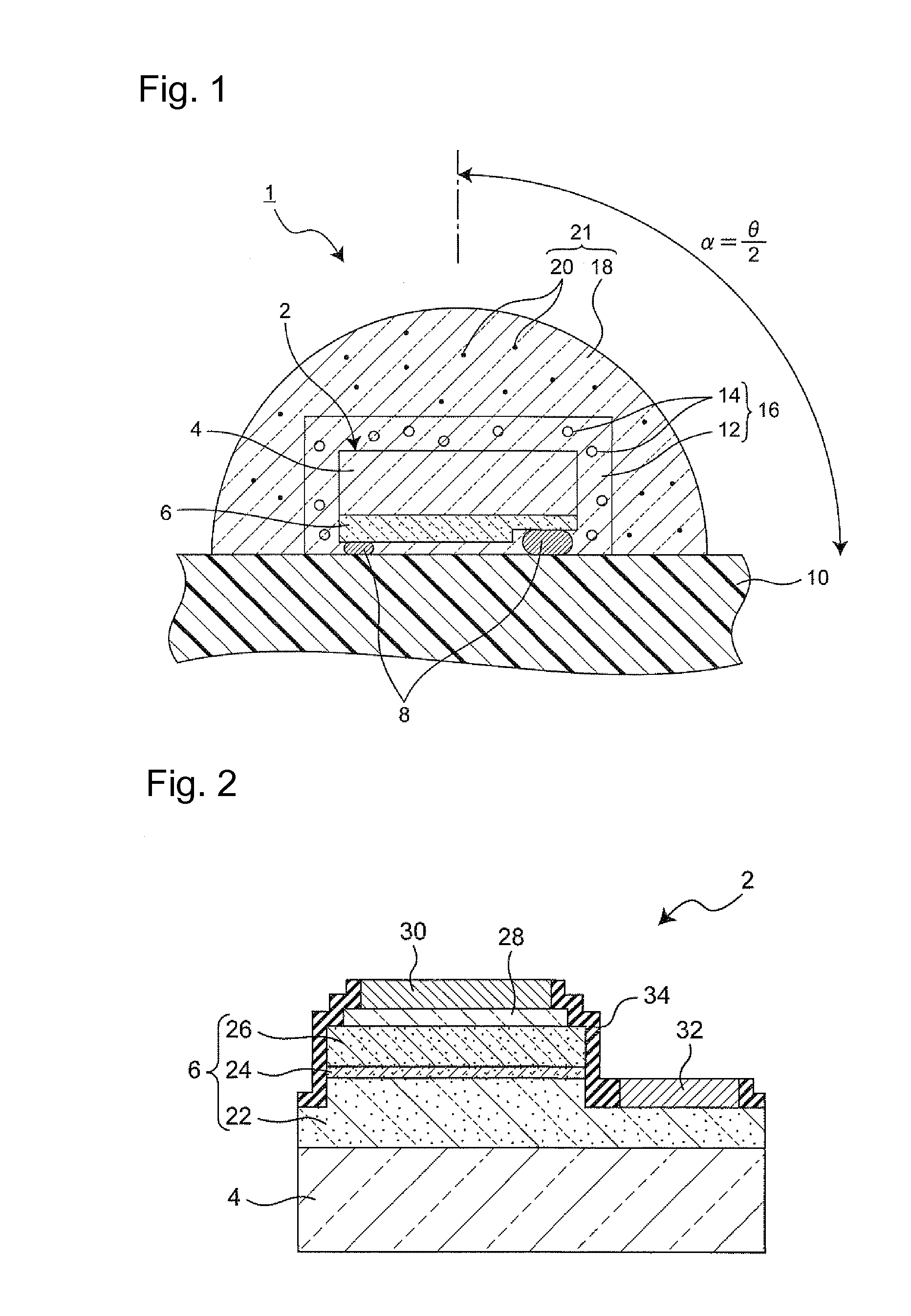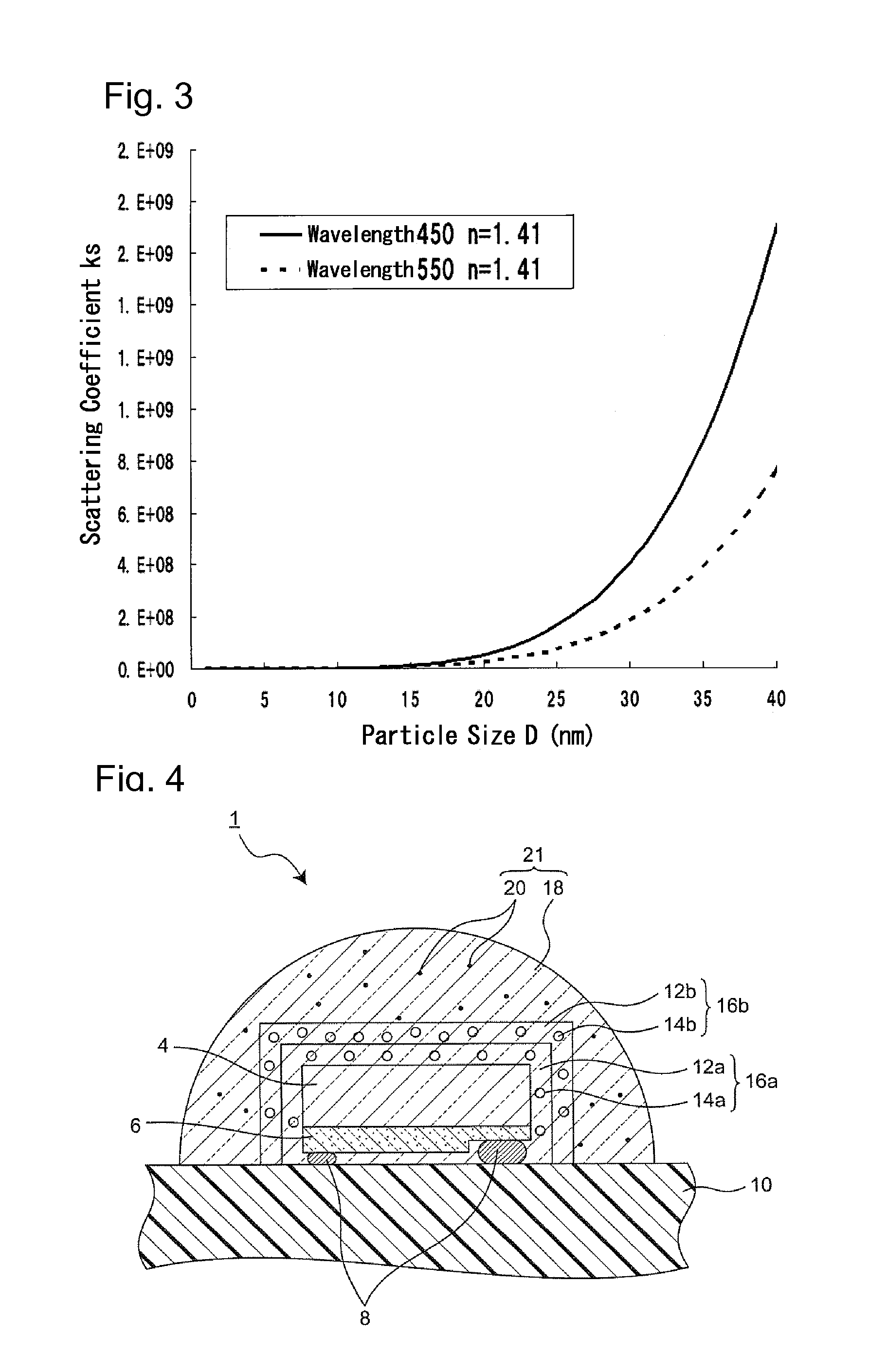Light emitting device
a technology of light-emitting devices and light-emitting tubes, which is applied in the direction of semiconductor devices, electrical equipment, basic electric elements, etc., can solve the problems of non-uniform emission intensity distribution of such devices, and achieve the effects of suppressing color unevenness, reducing emission intensity distribution differences, and easy control
- Summary
- Abstract
- Description
- Claims
- Application Information
AI Technical Summary
Benefits of technology
Problems solved by technology
Method used
Image
Examples
first embodiment
[0033]FIG. 1 is a schematic sectional view showing a light emitting device 1 according to the first embodiment of the present invention. A semiconductor light emitting element 2 is fastened via a solder bump 8 on a mounting substrate 10, and the periphery is coated by a fluorescent material layer 16 having substantially uniform thickness. The semiconductor light emitting element 2 is constituted by forming a semiconductor layer 6, that has a light emitting layer capable of emitting blue light, on a substrate 4 of square shape in plan view, and is flip-chip mounted with the semiconductor layer 6 facing down and the substrate 4 facing up. The fluorescent material layer 16 is formed by dispersing fluorescent material particles 14 in a transparent fluorescent material holding member 12, so that the fluorescent material particles 14 absorb a part of blue light (primary light) emitted by the semiconductor light emitting element 2 and emit light of longer wavelength such as yellow light (s...
second embodiment
[0068]FIG. 4 is a sectional view showing a light emitting device according to the second embodiment of the present invention. The light emitting device 1 shown in FIG. 4 comprises two layers; a first fluorescent material layer 16a that emits red light and a second fluorescent material layer 16b that emits yellow light, disposed in this order from the inside. This constitution enables it to make the light emitting device that emits light with higher red component and higher mean color rendering index Ra than in the case of forming only the fluorescent material layer 16 that emits yellow light. The light emitting device having higher mean color rendering index Ra is suited for illumination applications. Increasing the red component also enables it to make the light emitting device that emits light of warm white. This embodiment is similar to the first embodiment in other respects.
[0069]The first fluorescent material layer 16a preferably contains fluorescent material particles 14a that...
third embodiment
[0074]FIG. 5 is a sectional view showing a light emitting device according to the third embodiment of the present invention. The light emitting device 1 shown in FIG. 5 has particles 20 formed from an inorganic material having high refractive index dispersed also in the fluorescent material layer 16. This embodiment is similar to the first embodiment except for this respect.
[0075]Refractive index of the fluorescent material layer 16 can be increased by dispersing the particles 20 having a higher refractive index than that of the fluorescent material holding member 12. This increases the critical angle at which total reflection occurs in the interface between the substrate 4 and the fluorescent material layer 16 and the interface between the fluorescent material layer 16 and the scattering layer 21, thereby decreasing the reflection loss at the interfaces. When the particles 20 formed from an inorganic material are dispersed also in the fluorescent material layer 16, the heat conduct...
PUM
 Login to View More
Login to View More Abstract
Description
Claims
Application Information
 Login to View More
Login to View More - R&D
- Intellectual Property
- Life Sciences
- Materials
- Tech Scout
- Unparalleled Data Quality
- Higher Quality Content
- 60% Fewer Hallucinations
Browse by: Latest US Patents, China's latest patents, Technical Efficacy Thesaurus, Application Domain, Technology Topic, Popular Technical Reports.
© 2025 PatSnap. All rights reserved.Legal|Privacy policy|Modern Slavery Act Transparency Statement|Sitemap|About US| Contact US: help@patsnap.com



